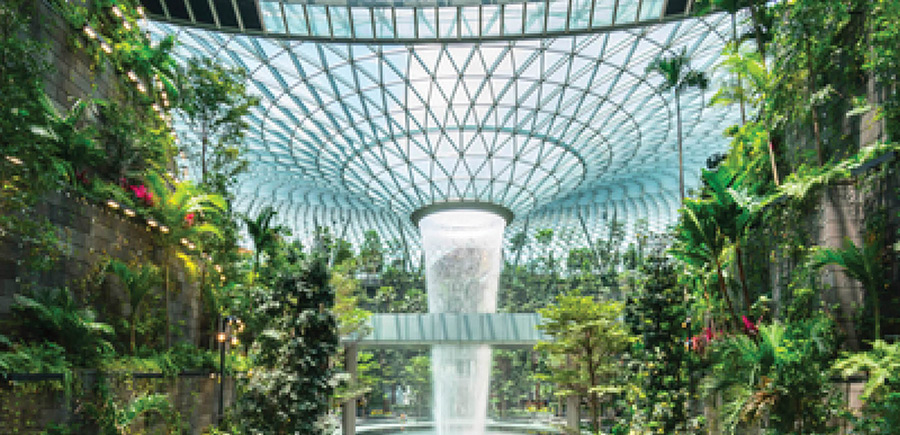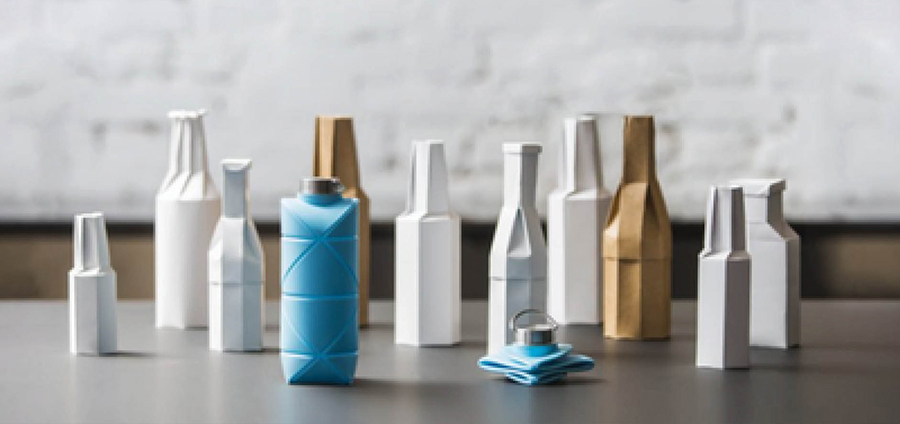DURABIO™, a plant-derived bio-engineering plastic created by the Mitsubishi Chemical Group, has been adopted for the body surface (outer layer) of ZOOM L1, a cap-type water-based gel ink ballpoint pen of the design stationery brand ZOOM, a registered trademark of Tombow Pencil Co., Ltd.
DURABIO™ is a bio-engineering plastic made using the renewable plant-derived raw material isosorbide. Its use can reduce the consumption of petroleum, which is an exhaustible resource, and can also contribute to the reduction of greenhouse gases since the plant that is the source of the raw material absorbs carbon dioxide during its growth process. Due to its outstanding impact strength and durability, DURABIO™ is used in automotive exterior and interior parts and other applications. DURABIO™ is also characterized by excellent design capability. Its excellent moldability gives a frosted glass-like matte texture to the surface of ZOOM L1. Its high transparency enables a design with depth, and a silhouette that changes depending on the amount of light. These excellent characteristics have been highly evaluated, which has led to its adoption.

ZOOM L1, a cap-type water-based gel ink ballpoint pen

DURABIO™ is used on the body surface (outer layer)
The glass dome of the building is reminiscent of an oversized donut, consisting of 9,600 glass panes, which merge in the middle into the 131-foot high waterfall. 24 AGRULINE PE 100-RC pipes run from the plant area outside via the curvature to the inside of the donuts, where they end in a ring-shaped collector made of stainless steel. From this collector, the highest waterfall in the world, which is located in the Changi Aiport building, is fed. AGRU America, Inc.’s AGRULINE pipes were installed by HITACHI AQUA TECH Engineering Pte Ltd as a water supply pipe for record waterfall. Due to their flexibility, they adapt perfectly to the curvature of the building. In order to reduce the number of welds as much as possible, pipe rods with a length of 36 feet were used — that’s the maximum length that can still fit into a 40-foot container. Inside the building, these were connected to a strand by means of butt welding and then pushed through the opening of the waterfall onto the roof. Only the last welding on the outside of the building was carried out with heating coil welding. More than 200 electric sleeves were used for this purpose. The pipe could then be attached to the steel girders by means of pipe clamps. To ensure that the cables also fit architecturally with the overall concept, they were clad with stainless steel panels. After a long and intensive product test, the end customer opted for AGRULINE PE 100-RC pipes, which prevailed over the originally planned stainless steel pipes due to the excellent properties of AGRU America, Inc.’s AGRULINE pipe systems. www.agru.a


At 131 feet, the world’s highest indoor waterfall is fed by AGRULINE pipe systems.

The 705-pound block of ACRYLITE® is home to eight different cityscape displays of Frankfurt, Germany.
Museums are always looking for new and unique presentation methods, and the Historical Museum in Frankfurt is no exception. The museum features a display of several models of the city under an enormous ACRYLITE dome.
A 705-pound block of ACRYLITE® was used to create the snow globe. The completed globe has a diameter of 7.8 feet and is 5.2 feet tall (excluding the base) and 1.181 inches thick, and has a net weight of 462 pounds. Its transparent, colorless, smooth and seamless design ensures that visitors at the Frankfurt Historical Museum have an unobstructed view of the exhibits inside the globe. The globe was manufactured by the ACRYLITE® partners at Birkholz Kunststoffwerk GmbH from Heppenheim.
To make the globe, the oven first needed to be modified to heat material with a width of more than 8 feet. Then, the acrylic block was heated for two hours in an oven at 365 °F. The heated acrylic was then stretched over a hollow mold made of foam material and formed into a globe by sucking it into the mold using vacuum pumps. The team did need to revise the mold and modify the framing system, but eventually succeeded in producing a globe with the desired properties. The greatest challenge in manufacturing the sphere was stretching the material beyond that of a hemisphere to reach the base of the exhibit to resemble an actual snow globe.
Apart from the impressive manufacturing of this display, visitors of the Frankfurt Historical Museum can view eight different models of the city of Frankfurt with a touch of a button. www.acrylite.co

The manufacturing process of the giant snow globe.

The final display, showcasing one of the eight views of the city of Frankfurt, Germany.
What do DSM Engineering Materials Artinel® Eco and origami have in common?

Inspired by the Japanese art of paper folding, the patented and award-winning design of DiFOLD’s Origami Bottle means it can fold down to less than 10% of its original volume. This greatly improves user convenience, and reduces the carbon footprint of shipping to retailers and the customer directly. The Origami Bottle provides a durable, reusable and recyclable alternative to single-use water bottles, helping to avoid plastic packaging waste. Because the bottles are made from DSM Engineering Materials’ Arnitel® Eco, the environmental benefits are even greater.
Arnitel® Eco is a bio-based thermoplastic copolyester, partially derived from renewable rapeseed oil. This reduces the material’s cradle-to-gate CO2 emissions, delivering a carbon footprint reduction of up to 50% compared to traditional copolyesters. It is BPA-free and can withstand temperatures of between -30 °C and +100 °C.